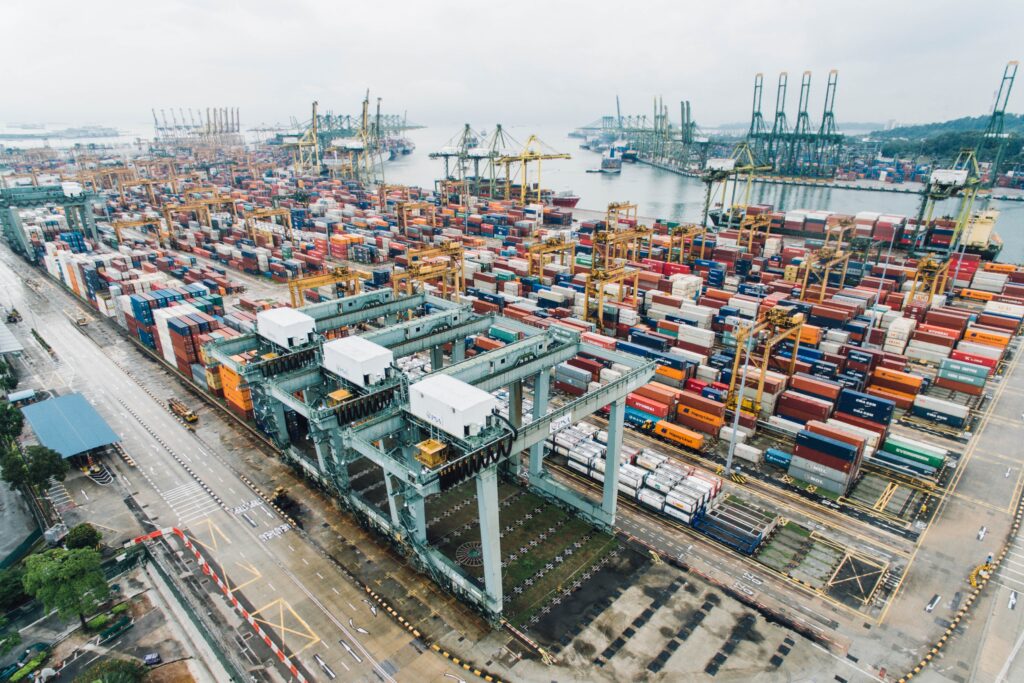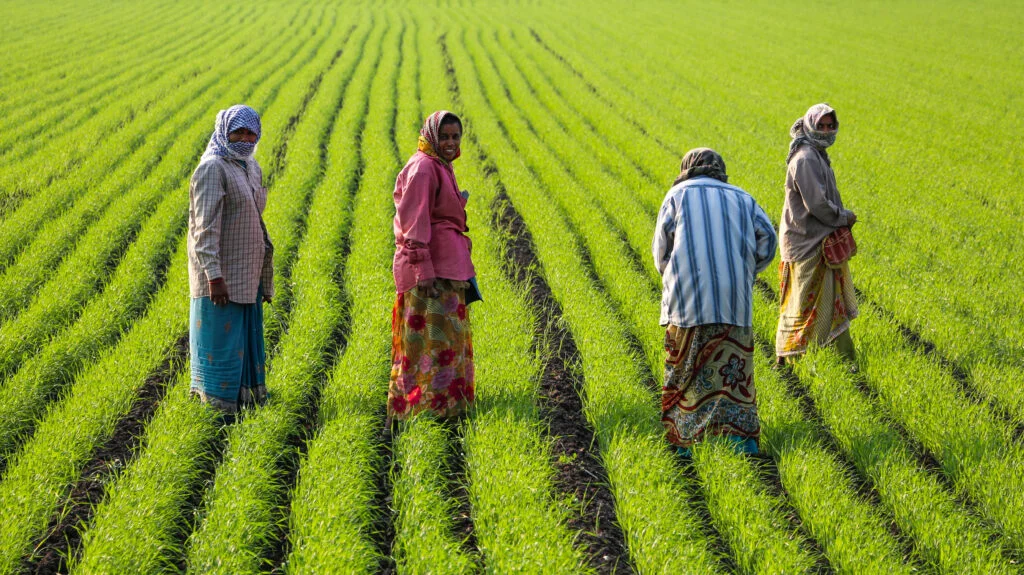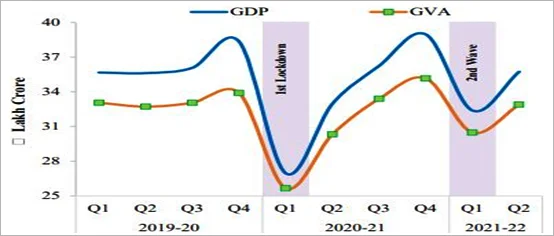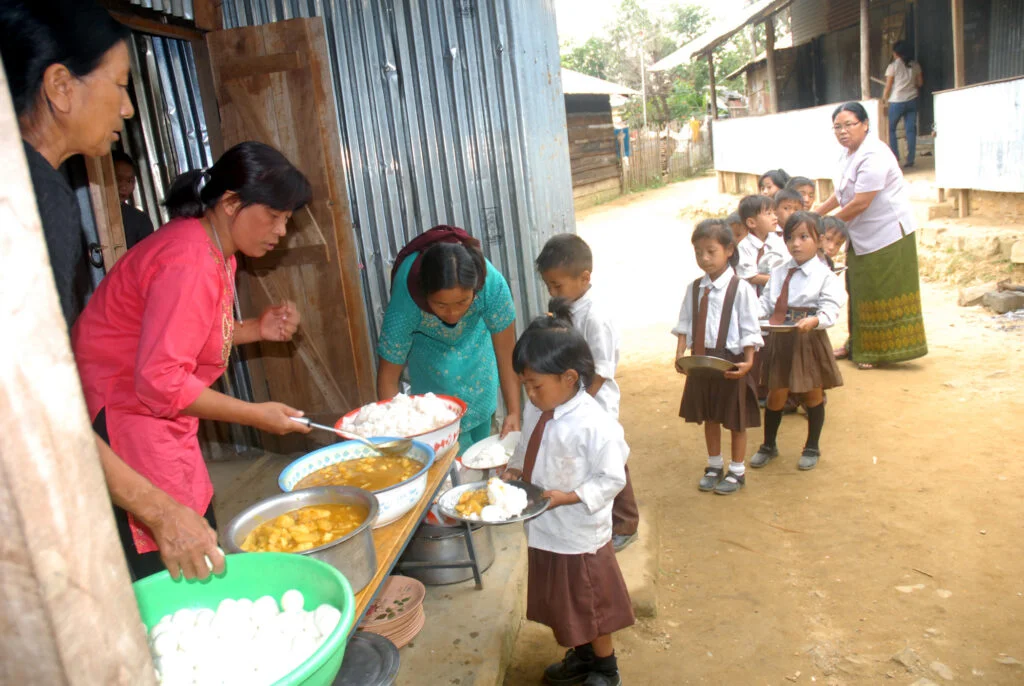The finance minister presented the union budget for 2022-23, highlighting the policy and spending priorities for the Government of India. It is a financial statement showing receipts and expenditures of the Central Government, wherein the Expenditure is factored in first, then the receipts are planned.
Before discussing the key areas, let us understand the budget’s basics. The Constitution of India requires the Government to present the “Annual financial statement” to the Parliament every financial year. After that, the budget goes through the following six stages in the Parliament:
- Presentation of budget
- General discussion
- Scrutiny by departmental committees
- Voting on demand for grants
- Passing of appropriation bill
- Passing of the Finance bill
It is an annual exercise. From 2017, the presentation will be on 1st February of every FY. The document holds more importance as we celebrate 75 years of Indian independence this year as Azadi ka Amrit Mahotsav.

Image courtesy- India Today
The Four Priorities of the Union Budget for AMRIT KAAL:
The “Amrit Kaal” is the 25-year-long lead-up to India @100. The Ministry of Finance has provided a blueprint for the next 25 years with an all-inclusive and futuristic budget.
1. PM Gati Shakti- National master plan for world-class infrastructure
The approach focuses on seven engines of growth like roads, railways, airports, ports, mass transport, waterways and logistics to create world-class infrastructure and develop multi-modal connectivity. Further powered by SABKA PRAYAS, i.e. the collective effort of centre, states and private sector, leading to diverse opportunities for all.
2. Inclusive Development
- The aim is to focus on all aspects of Roti, Kapda, and Makaan by providing facilities related to housing for all by 2022, tap water connections by 2024, 100% electrification, one nation one ration card scheme.
- Set up 75 digital banking units (DBUs) in 75 districts and promote digital payment platforms like Paytm, PhonePe, and others to promote financial inclusion.
- The goal is to double farmer income by 2022 and increase MSP further.
- Credit facilitation implemented under Credit Guarantee Trust for Micro and Small Enterprises.
- Skill development aligned as per industry requirements under the national skills qualification framework.
- To deliver quality education via e-learning systems in all spoken languages. It will use the hub-spoke model.
- Prime minister’s development initiative for the northeastern region to provide a livelihood.

3. Productivity Enhancement and Investment, Sunrise Opportunities, Energy Transition, Climate Action
- Improve ease of doing business (EODB) to fulfil the motto of “minimum government & maximum governance”.
- A move toward digitization, portal integration, single-window clearance, single point of access for services, and the elimination of overlapping restrictions are all on the horizon.
- To further amend the insolvency and bankruptcy code (IBC) to facilitate cross border insolvency resolution.
- A paradigm shift in urban planning towards eco-friendly development is required, focusing on tier 2 and tier 3 cities and transit-oriented development.
- The production linked incentive scheme in 14 sectors has done wonders. The vision is to expand it further to achieve Atma Nirbhar Bharat.
- There are more investments in AI, IoT, genomics, semiconductors, and other technologies to modernize the country and provide job opportunities.
- To promote clean and sustainable mobility like EV vehicles BS-VI compliant automobiles. Example- to put battery swapping policy in place.
- A shift to low-carbon development strategies, such as solar power and biomass pellets in thermal power plants.
4. Financing of Investments

- Capital investment has a multiplier effect in creating employment opportunities and enhanced demand.
- The Government aims to maintain the virtuous cycle of investment. For this purpose, the outlay for capital expenditure in 2022-23 increased to 2.9% of GDP compared to 2.25% in 2021.
- Bring in venture capital & private equity investments. Also, shift towards blended finance for Sunrise sectors like Deep-Tech, agri-tech, where both Government and private managers will manage the Fund.
- With the outburst of investments in cryptocurrency like bitcoins, the GoI was apprehensive, so the Central bank digital currency was proposed to be introduced by RBI. The move is to make Digital transactions more secure and less volatile.
- The Union government has provided more significant fiscal space to the states. For example- enhanced financial assistance towards States for capital investment.
- To fulfil the aim under Intended nationally determined contributions (INDCs) of reducing the carbon intensity of GDP, the Government plans to introduce sovereign green bonds to mobilize resources for green infrastructure.
Sector-Specific Proposals:
AGRICULTURE- Promoting value addition and sustainability in farming
- The Government of India stresses the importance of promoting chemical-free natural farming (ZBNF) across the country.
- 2023 announced as the International Year of Millets. The plan is to promote the post-harvest value addition, consumption and branding of millet products.
- A comprehensive scheme was put in place to increase the domestic production of oilseeds and reduce imports.
- Encouraging agri-entrepreneurs and connecting farmers to technology like Kisan drone and mobile applications. It reduces losses and develops a seamless supply chain.
- Implementing Ken-Betwa river interlinking project to provide irrigation to around 10 lakh hectares of Agri land.

HEALTH AND WELLNESS- A Holistic approach to health care
- Introduction of the national digital health system to provide a unique health identity.
- The National Tele Mental Health Programme is to launch for quality counselling.
- Saksham Anganwadis will develop to provide an improved environment for early child development.
EDUCATION- Universalization of quality education
- One class, One TV channel programme, will be expanded to provide instructional support and strengthen the educational system’s resilience.
- To promote critical thinking in a simulated environment and improve ranking under the program for international student assessment (PISA) of OECD.
- To make education digital in nature for improved accessibility.
INFRASTRUCTURE- Atmanirbharta in defence
- The emphasis is on reducing imports and pushing indigenous technology and development to the forefront.
- A rise of 9.48% in the defence budget is less than impressive.
- Private industry is encouraged to take up the design and development of military equipment.
ENVIRONMENT- Building a greener future
- A shift to a circular economy for increased productivity and creating new businesses and jobs.
- The introduction of a battery swapping policy as an alternative to the charging stations in urban areas. We cannot use lithium-ion batteries as they are expensive and in short supply in the world.
TAXATION- What is in it for the middle class and other sections?

Image Courtesy- Press Information Bureau
- Taxpayers can now file an “updated return” on additional tax payments. It is an affirmative step in the direction of voluntary tax compliance.
- Cooperatives would benefit from reducing the Alternative Minimum Tax (AMT) rate and surcharge.
- Provision of tax relief to persons with disabilities.
- Established a parity between central and state government employees in the national pension scheme.
- Eligible startups can avail of tax benefits until March 2023 as they have emerged as the drivers of growth for the Indian economy.
- Providing a concessional tax Regime of 15% for newly incorporated domestic manufacturing entities.
Did the Union Budget Stand on People’s Expectations?
It has come when the Indian economy is in recovery mode from the coronavirus pandemic. Most of the macroeconomic indicators show improvement, as the fiscal deficit. However, we are still dealing with the problem of stagflation, i.e. unemployment and inflation.

Image courtesy- National Portal of India @india.gov.in
Hits and Misses
Employment
On the job front, we can see both good and bad news. The good news is the increase in capital investment/ expenditure. This will create more job opportunities in the coming years. While the bad news is that the Government has recognized the problem of unemployment, it does not understand the scale of the problem. The severity of the issue can be seen in the reversal of labour back to agriculture. The other issue is sharp cuts in budgetary allocation to MGNREGA, despite the high demand for work.
Micro Small and Medium Enterprises (MSME)
The budget has given an additional 50,000 crore to MSMEs at the expense of cuts in other schemes. Nevertheless, what is to be done for the success of the MSME sector is the generation of demand, which can only improve by employment and increased per capita income. The prescribed solution for this is maintaining a virtuous cycle of economic growth.
However, the recently concluded farmer’s protest over the 3 Agri bills impacted the growth by disrupting the supply chain and logistics. The only demand was assured MSP. In such times the decision to slash allocation to the price support scheme and PM-AASHA, which ensure MSP based procurement operations, is not welcomed. There are many tech-enabled ideas for farming but very little money to seed them.

Infrastructure Projects
Most of the money is for ambitious infra projects. Measures are also taken for innovative financings, such as the monetization of operational assets. It can be genuinely transformative if executed as imagined. The execution is questionable, seeing the record.
Health and Education
Lastly, what did the budget do for health and education? The focus on complex infrastructure is good. However, what is worrying, it is at the expense of critical areas like health and education. Allocation for the education sector is 11.86% higher than last year. It is broadly for Samagra Shiksha Abhiyan, with programs like mid-day meals seeing a drop in allocations.

Health expenditure has come down to 0.37 % of GDP from 0.41 % the year before. Spending on the National Health Mission has increased only marginally, which given the raging inflation barely amounts to much.
Way Ahead:
“Spending on asset building is the key. Thereafter every sector needs to ramp up production and investment to provide jobs that put disposable income in the hands of people to spend. All these factors will create demand and boost manufacturing. The sustained cyclical growth will lead India to a $5 trillion economy by 2025”.
Read the engaging article on Indian foreign policy in a globalizing world here!
About the Author:
Manali Mathur

Manali Mathur is a freelance editor and research enthusiast. Although she enjoys open-hearted conversations about life, being an extrovert with humour comes in handy. She pursued a master’s in political science from Delhi University and was a former intern at NHRC, Delhi. Her core areas of interest lie in public policy, diplomacy, environment, governance, administration.






